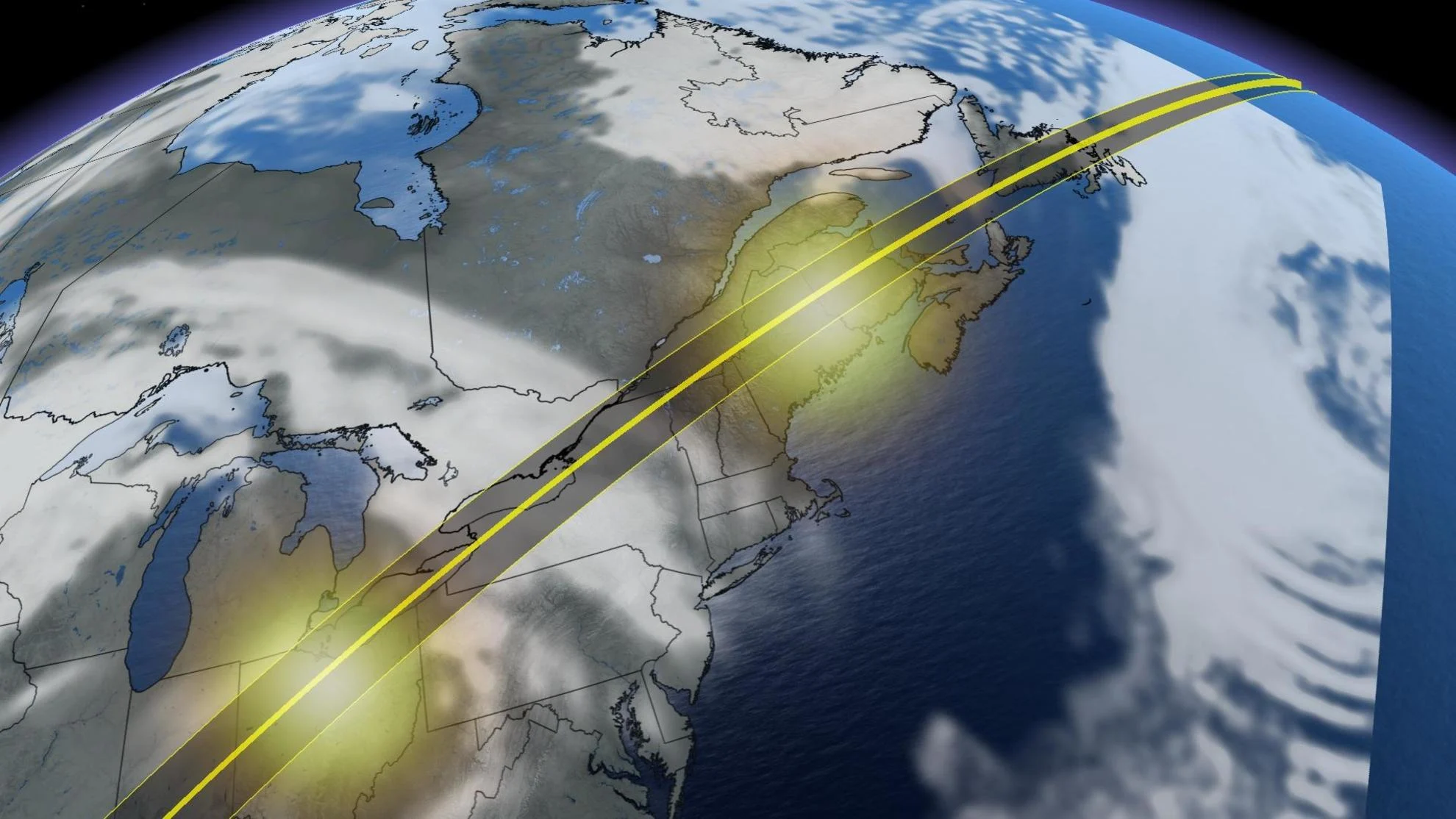
Solar eclipse 2024: One part of Canada remains 'go-to place' for viewing
Millions across North America await Monday's total solar eclipse, but who will score the best view? There's a Canadian 'go-to' that many are heading to
Millions of people from all corners of the country and all throughout the world are trekking to the path of totality to experience Monday's once-in-a-lifetime total solar eclipse
In some areas, the moon will completely block the sun for more than four minutes, bringing nighttime darkness through the mid-afternoon hours. For those first time viewers, it will surely take your breath away.
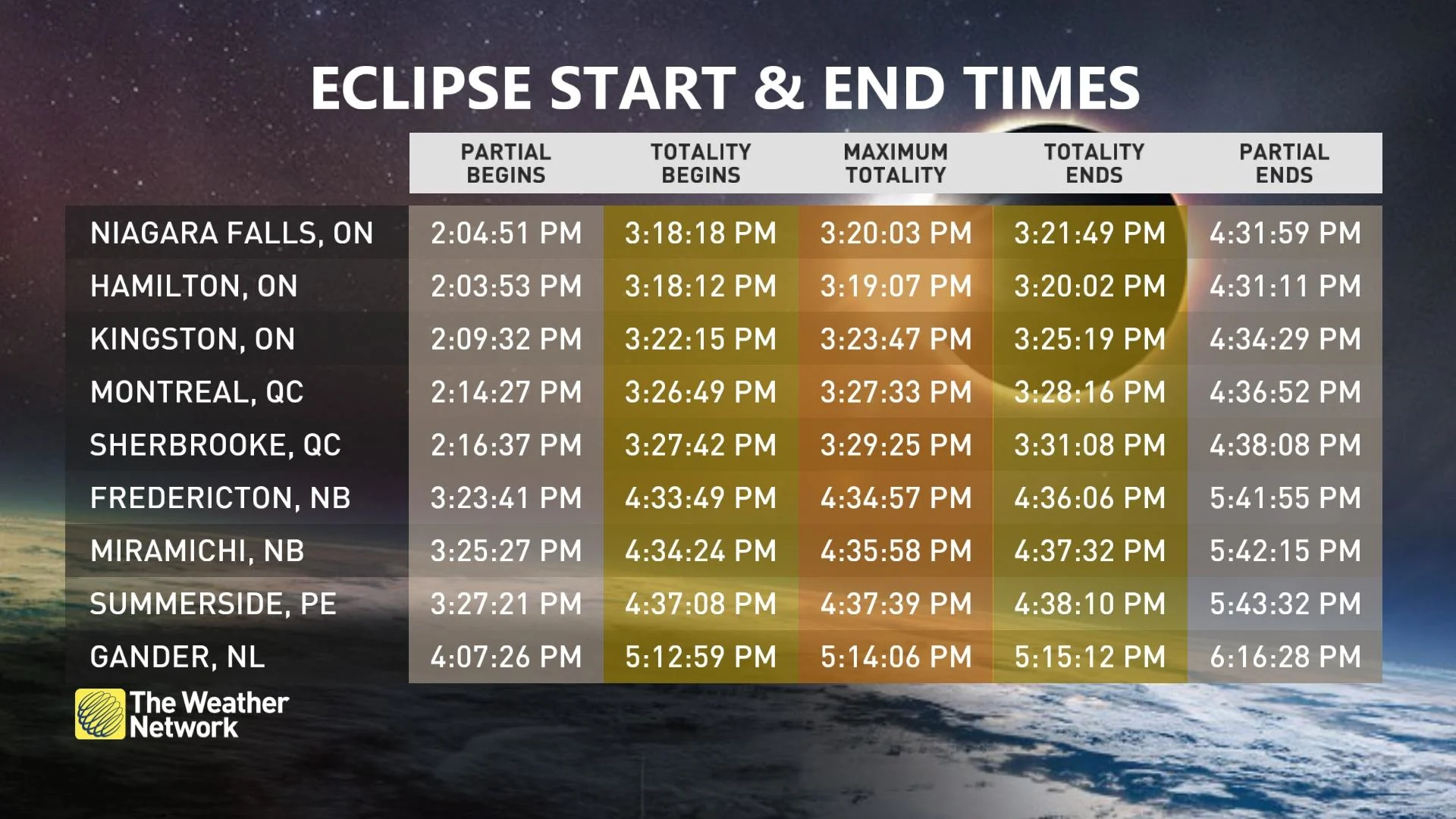
Weather conditions during those precious few minutes, however, are a make-or-break moment for those seeking out this memorable spectacle.
Here’s your ultimate look at where clouds may obscure the moon’s moment in the sun—and where clear skies will lead to an unforgettable eclipse.
DON'T MISS: Everything you need to know for April's spectacular and rare solar eclipse
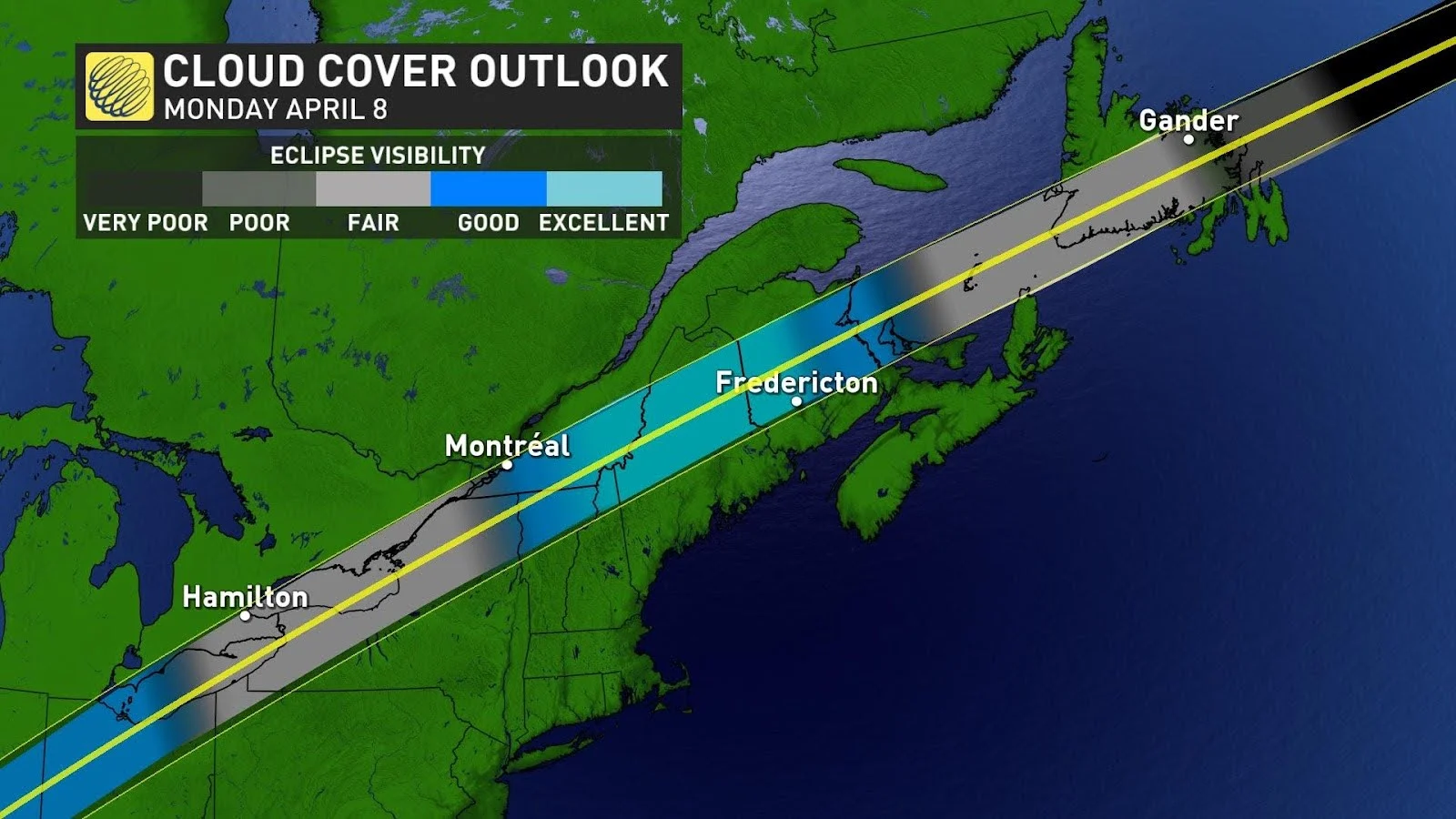
Southern Ontario: Clouds with breaks of clearing
The moon’s shadow makes landfall on the northern shores of Lake Erie near Leamington at 3:13 p.m. ET. Totality will spend just fourteen minutes traversing Ontario, with lucky folks smack dab in the middle of the path of totality seeing midday darkness for about three minutes.
Clouds will play a starring role in Monday afternoon’s brief show.
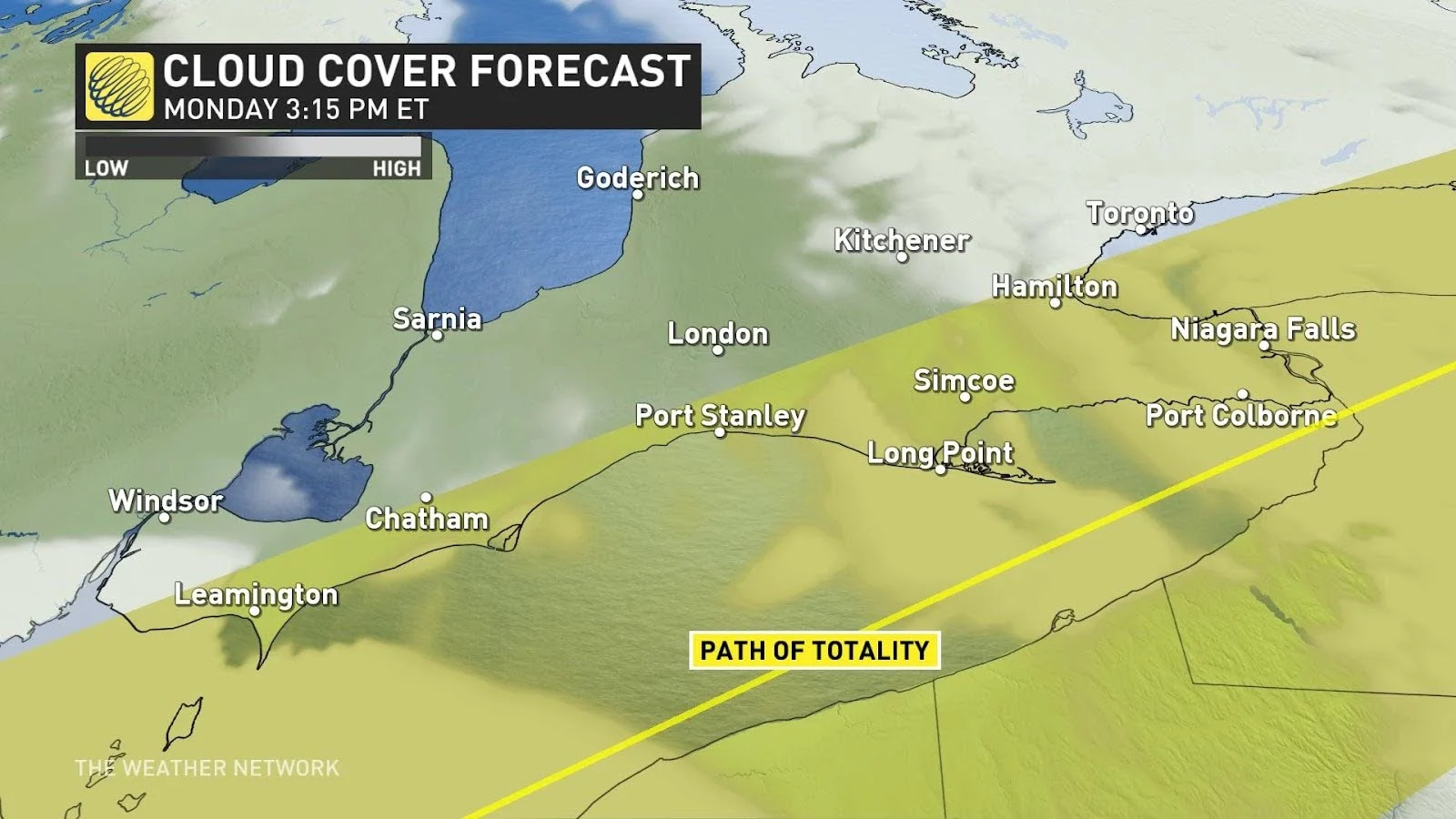
A low-pressure system over the northern United States will spill some clouds over southern Ontario to start the day, so you’ll wake up to plenty of clouds.
However, in the final countdown to the eclipse, those clouds will begin breaking up across extreme southwestern Ontario. Folks down here—including Leamington and just south of Chatham—may wind up with a fine view anyway.
MUST SEE: Cross the line: Steps away from path of totality in these communities
While Toronto proper may have clouds obscure the 99+ per cent coverage of the afternoon sun, locations expecting totality around Hamilton and Niagara may start seeing peeks of clearing through the clouds. Here’s hoping for the perfect timing for the tremendous number of folks camping out across the region for totality.
WATCH: Attendees looking forward to total eclipse in Niagara Falls
Eastern Ontario: Eclipse may filter through high clouds
The moon’s shadow will sweep over Lake Ontario and cross over Cobourg, Belleville, Kingston, Brockville, and eventually Cornwall.
High clouds streaming over the region from that pesky low-pressure system in the northern U.S. will allow filtered sunshine to bathe the region on Monday afternoon. There’s also a chance we’ll see breaks emerge around totality.
MUST SEE: Why clouds aren't a solar eclipse deal breaker
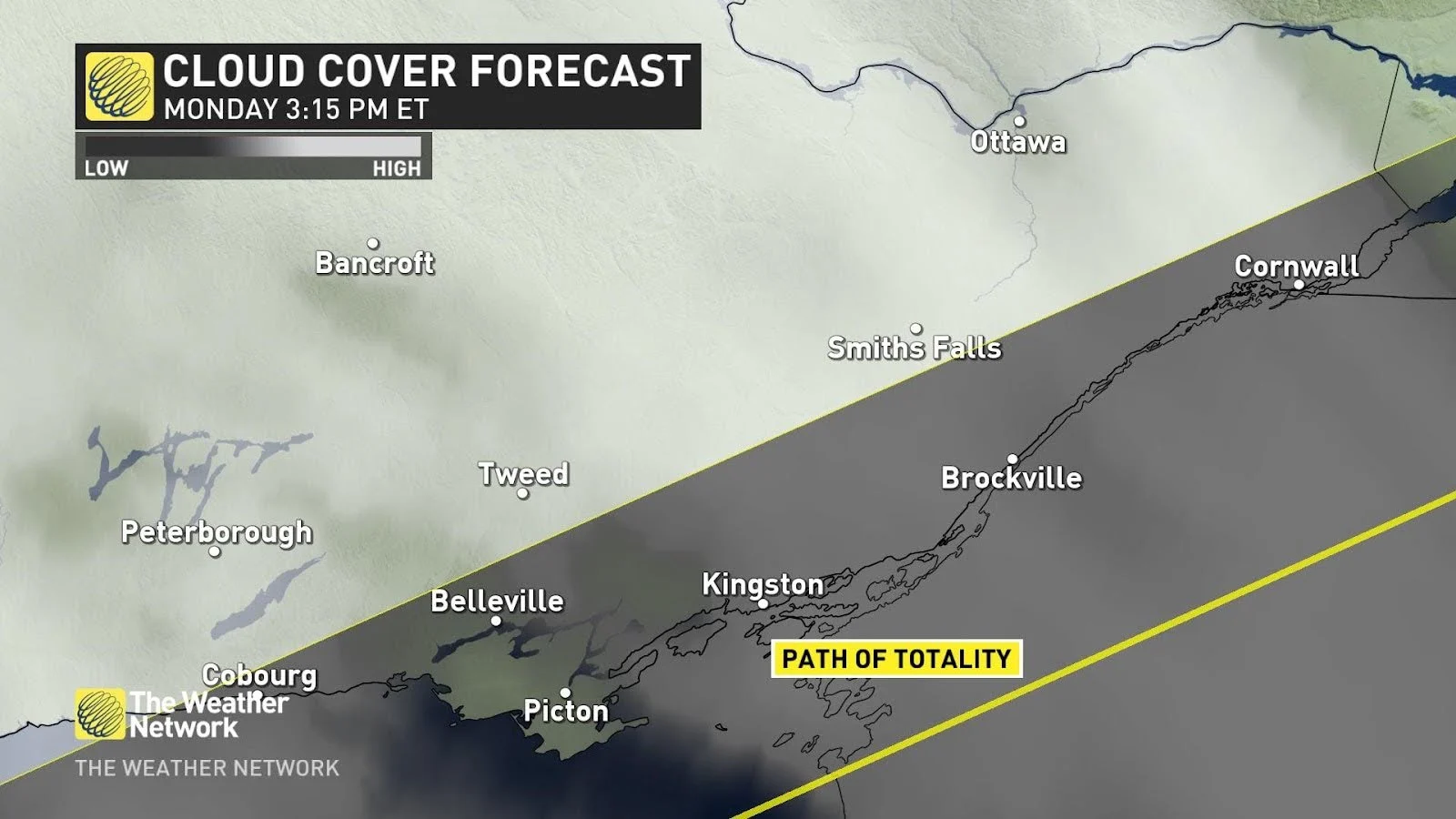
This deck of cirrus clouds won’t make for ideal viewing during the eclipse, but it’s not a complete deal breaker. While onlookers may not see a perfect disk in the sky with all the celestial trimmings, the eclipsed sun should still be visible through high-level clouds, and the moon’s shadow will have a unique appearance in the sky as it passes overhead.
Folks who’ve seen eclipses with high clouds often say that the obstruction has a surreal, almost cinematic effect, making it look like a spaceship passing overhead.
WATCH: Eclipse Q&A: Answering your burning questions about the total solar eclipse
Quebec: Clean and clear, especially in the east
Some of the best views of the eclipse in all of North America will unfold in the skies over southern Quebec on Monday, making this one of our go-to spots in Canada.
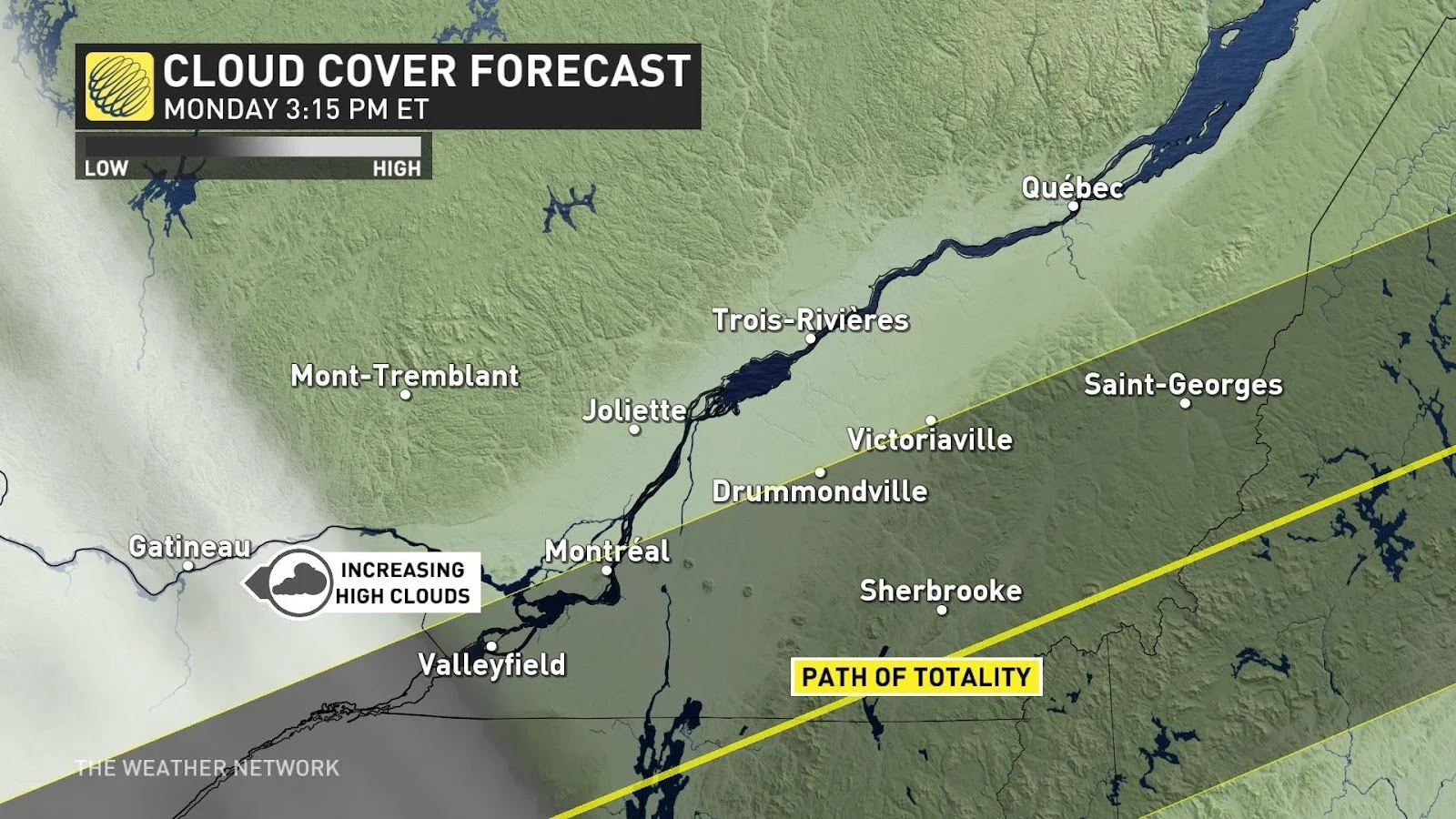
A ridge of high pressure over the region should hold off the advancing clouds long enough to provide just about everyone in the path of totality a crisp view of the event.
Skywatchers in downtown Montreal, Sherbrooke, and Saint-Georges are all likely to score a memorable experience amid mostly sunny skies on Monday afternoon.
New Brunswick and P.E.I.: The gold standard
Congratulations are in order for folks looking forward to totality over the Maritimes. Clear skies will provide a crisp view of totality throughout central and northern New Brunswick, as well as the western half of Prince Edward Island.
MUST SEE: Totality, corona, Baily's beads: Do you know your solar eclipse terminology?
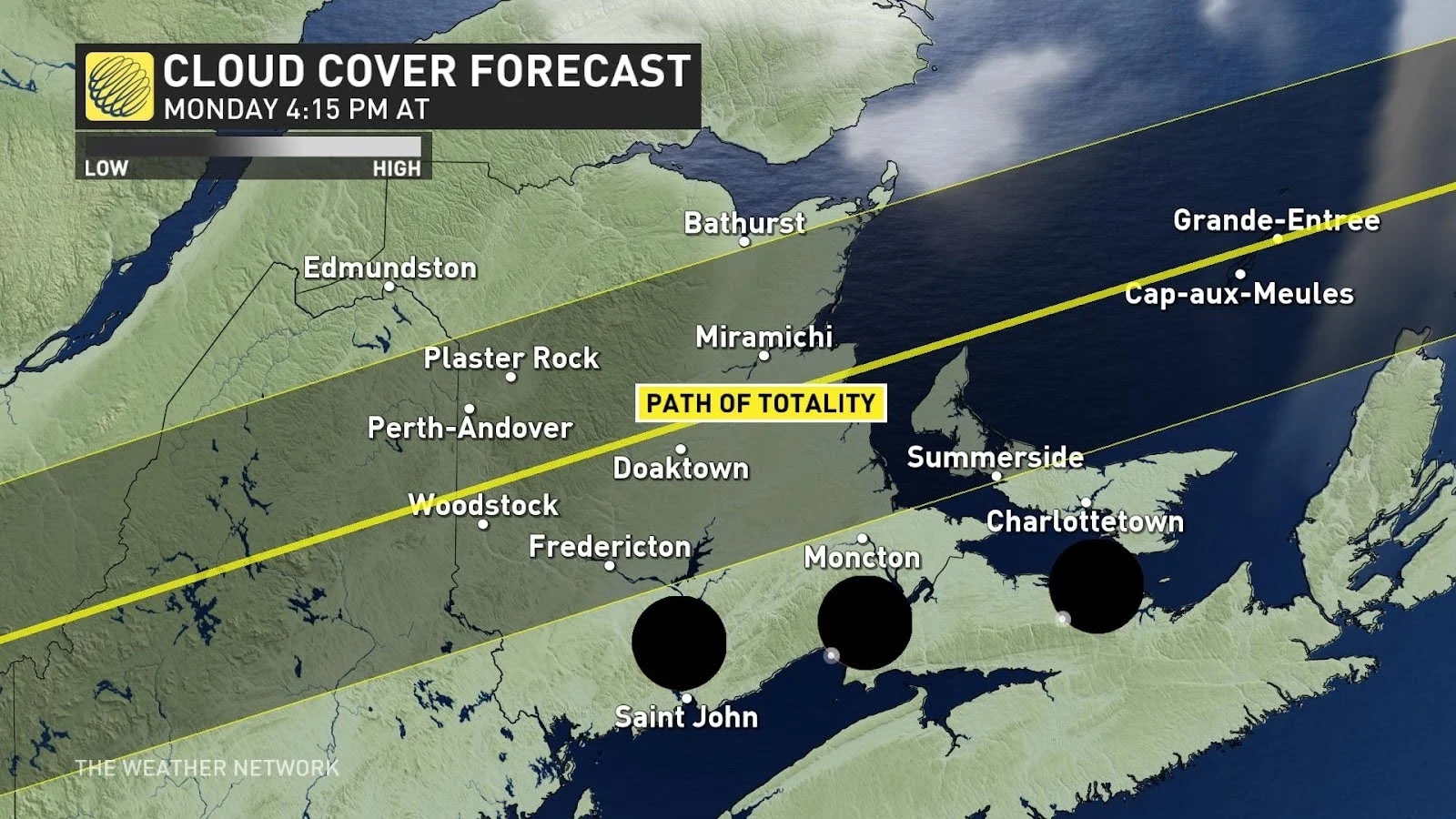
We’ll see totality cross the international border and arrive in Woodstock and Hartland, N.B., at 4:25 p.m. AT, lasting for a little over three minutes in each community.
The moon’s shadow will then cross over Fredericton, Doaktown, and Miramichi, before crossing the strait to darken the skies over western P.E.I., where folks in downtown Summerside will witness about one minute of totality beginning at 4:32 p.m. AT.
WATCH: How to capture the solar eclipse with your phone or DSLR camera
Newfoundland: Better in the west than the east
Our once-in-a-lifetime eclipse concludes with a grand tour of Newfoundland, where the path of totality sweeps from the southwestern shores east across the Bonavista Peninsula. St. John's will see 99+ percent coverage of the sun, but totality misses the city by a few dozen kilometres to the north.
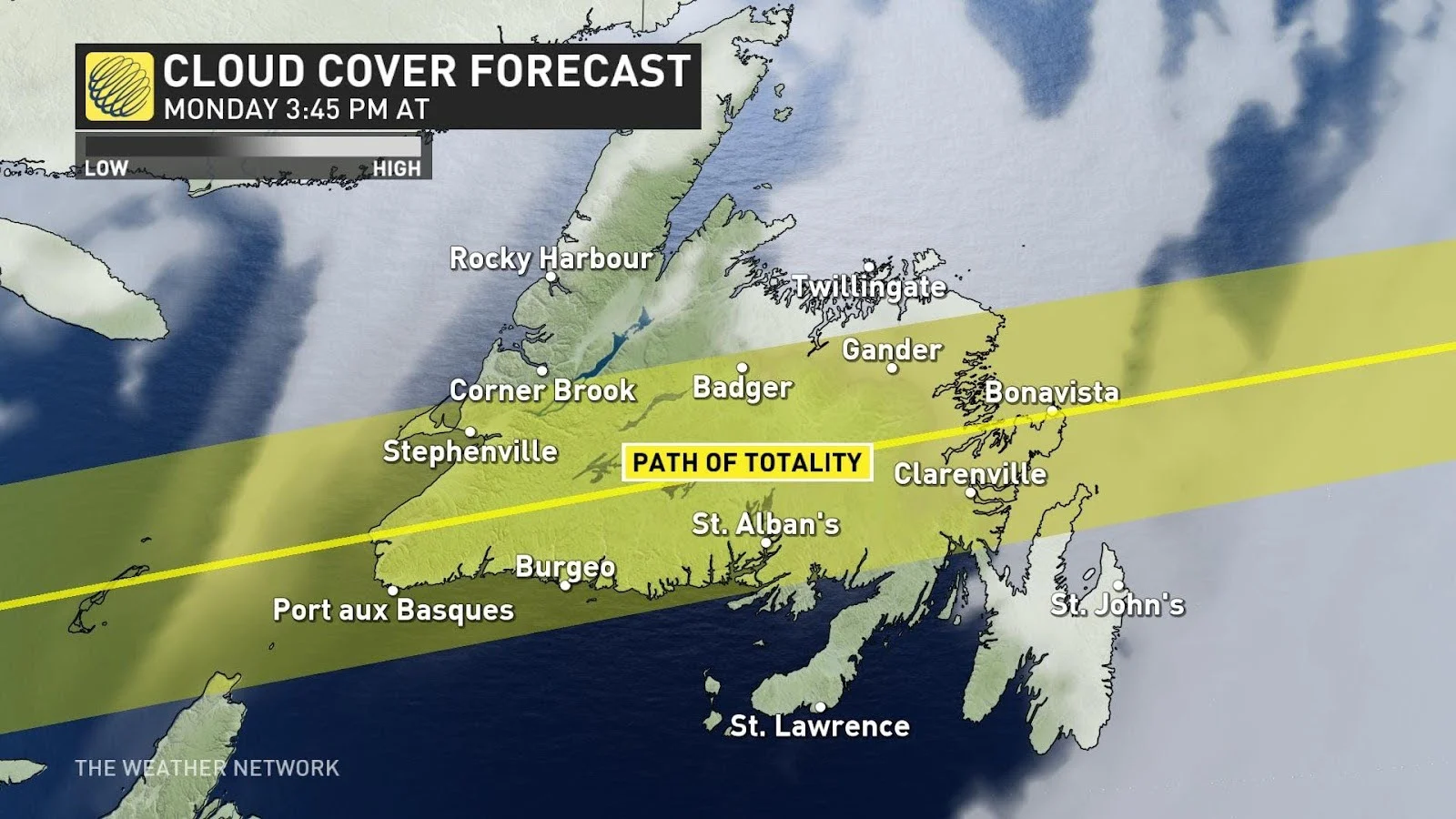
The island falls between a centre of high pressure to the west and a stubborn low-pressure system lurking over the ocean to the east. This system to the east will bring thick low-level clouds, onshore winds, and a risk for rain or drizzle during the eclipse.
As a result, Bonavista and Clarenville will see several minutes of daytime darkness without being able to see the eclipse itself.
If you’re eager to view totality in all its splendor, your best bet is to head toward Port aux Basques on the southwestern coast.
WATCH: Where in Canada is the best spot to view the Eclipse?
Partial eclipse graces the skies over Canada
Folks often say that a solar eclipse is “totality or bust.” That may be the case if you’ll settle for nothing less than absolute perfection. But a partial solar eclipse is pretty cool, too. Our skies always have something to offer nature lovers of all ages.
A partial solar eclipse is visible across all of Canada on Monday afternoon—for the lucky towns where clouds aren’t in the way.
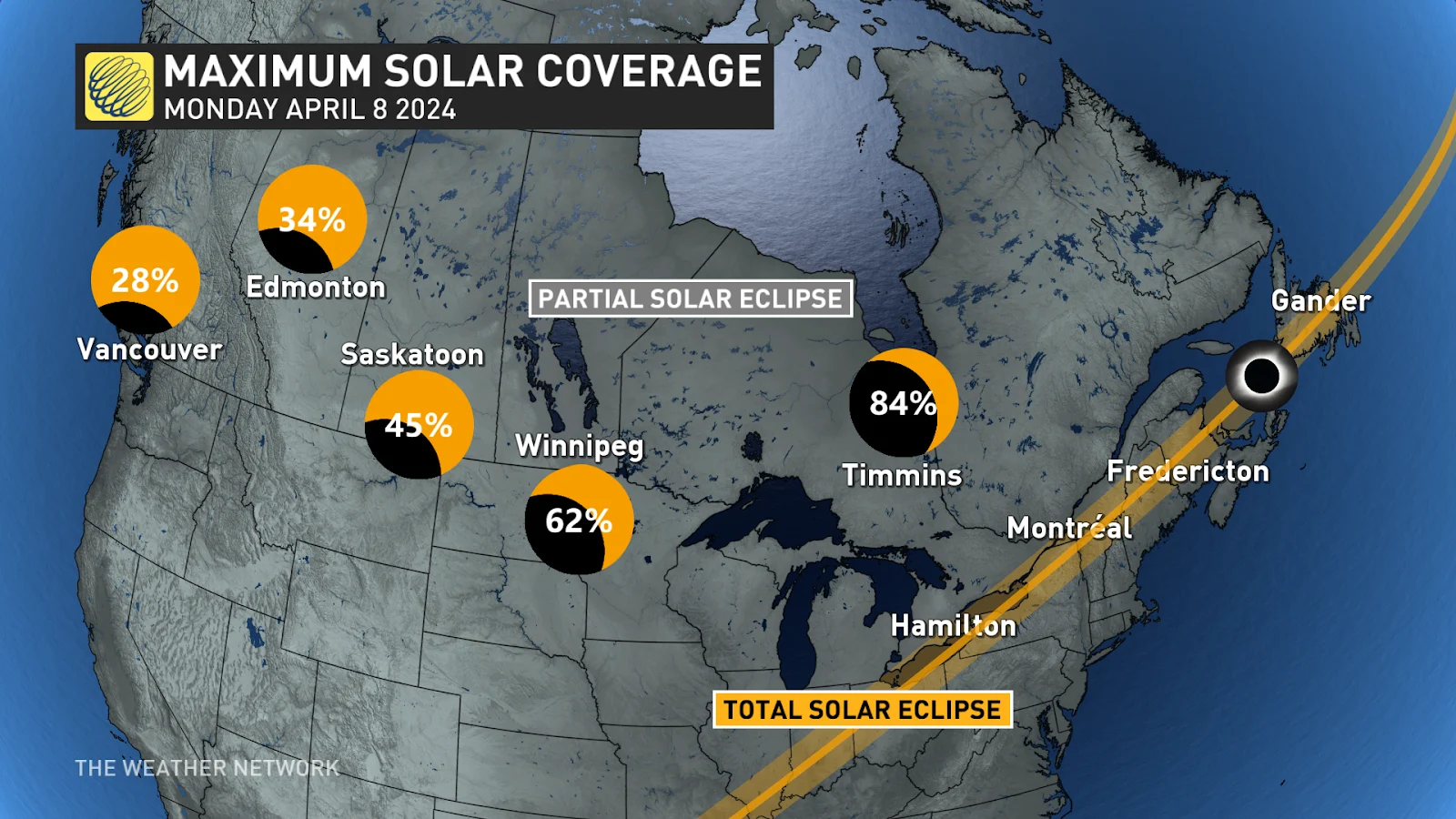
That lumbering low over the northern U.S. will send ample cloud cover across northern Ontario and southern Manitoba, potentially hindering the view of the partial eclipse for towns like Timmins, Thunder Bay, and Winnipeg.
The best view of the partial eclipse is out west toward Alberta and parts of Saskatchewan. Calgary and Edmonton have an excellent opportunity to safely watch more than one-third of our sun slip behind the moon early Monday afternoon.
Unfortunately, most folks in Vancouver and throughout southern British Columbia will miss out on the event as a dreary system pushes ashore with thick clouds and rain.
If you don’t want to miss out on the eclipse as it happens, be sure to catch The Weather Network’s livestreams on all of our platforms throughout the event on Monday.
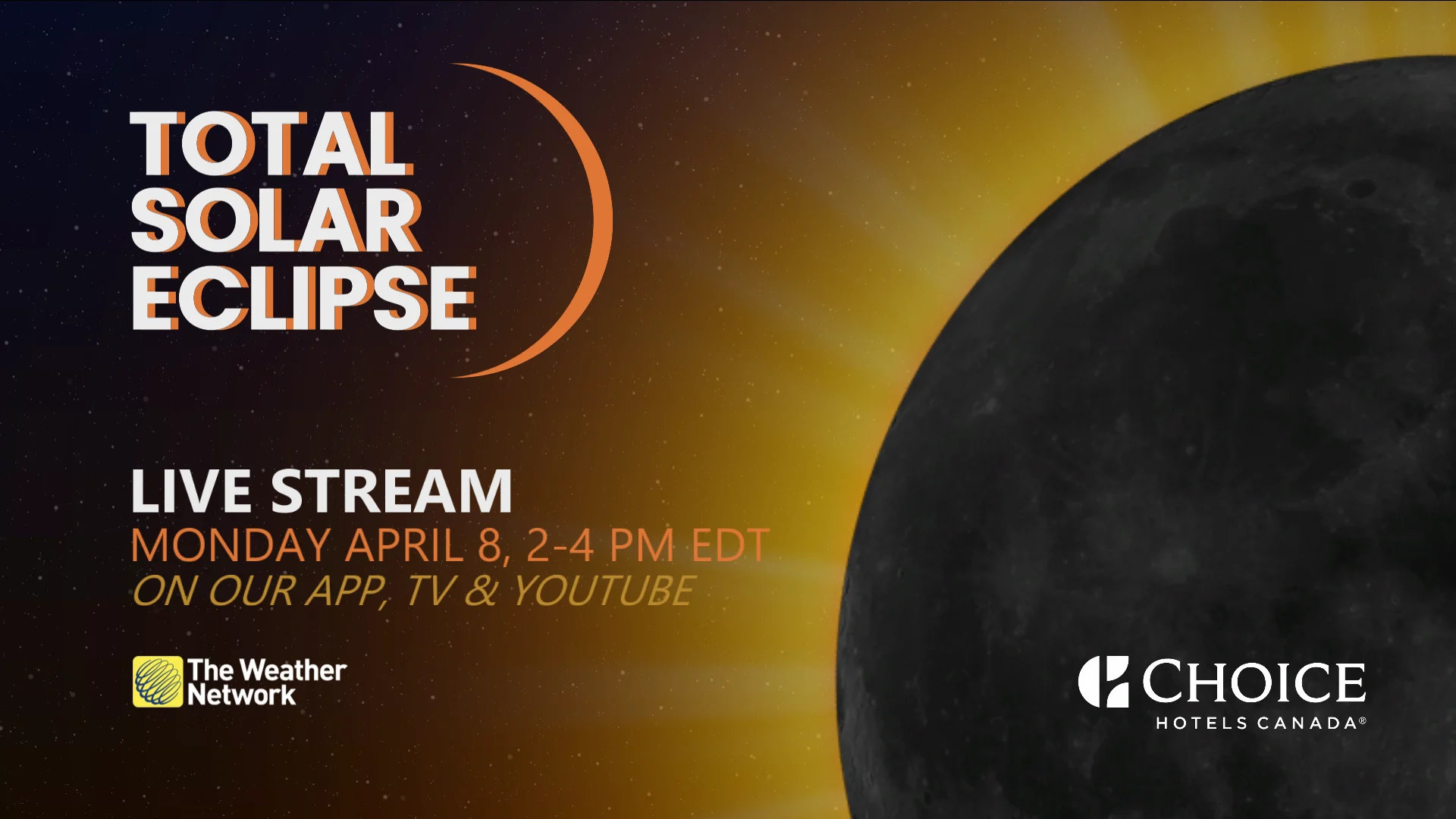
U.S. eclipse viewing hampered by widespread clouds, storms
Before reaching Canadian soil, the total eclipse will spend more than an hour traversing the United States. Several major cities—including Dallas, Little Rock, and Indianapolis—will experience several minutes of totality on Monday afternoon.

Clouds may be a significant issue for wide swaths of the path of totality across the U.S., with the best chance for clearing over the Midwest around Illinois and Indiana, as well as northern portions of New England like Burlington and Caribou.
There’s even a risk for severe thunderstorms across the southern U.S. during totality, with onlookers potentially dodging large hail and isolated tornadoes across Texas and Oklahoma.
Stay with The Weather Network for all the latest on this once-in-a-lifetime total solar eclipse.











